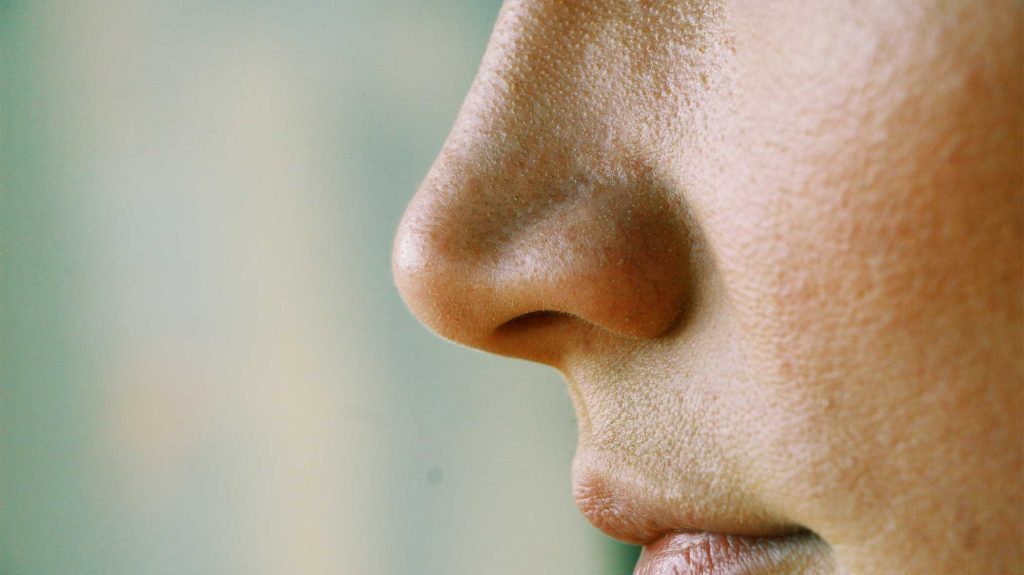Cocaine is a powerful stimulant drug that causes a rush of energy and excitement. Many people abuse the drug by snorting it. This practice can seriously damage your nose.
If you or a loved one struggles with cocaine abuse, it’s important to know the signs and complications of cocaine-related nose damage.
Why Do People Snort Cocaine?
Snorting is one of the most popular forms of cocaine use for two main reasons.
First, when you snort any drug, it enters your body very rapidly. Thus, snorting helps you feel the effects of cocaine as quickly as possible.
In addition, most people find snorting cocaine more convenient than smoking or injecting it. In general, snorting requires fewer tools, which makes it a convenient option at parties and other events where drug abuse occurs.
How Does Cocaine Damage The Nose?
When a person snorts cocaine, the drug gets absorbed by mucous membrane linings. These delicate tissues line the nasal cavity (the inside of the nose) and help keep your nose clean. When exposed to cocaine, they become irritated and inflamed.
This irritation will be more severe if the cocaine contains additives. Common cocaine additives include laxatives, caffeine, boric acid, and laundry detergent. Drug dealers use these substances to make cocaine heavier so they can charge more for it.
Along with irritating your mucous membrane linings, cocaine reduces blood flow to your nose. This causes the blood vessels in your nasal cavity to narrow, which deprives your nose of oxygen and increases your risk of various nose-related complications.
Signs Of Cocaine-Related Nose Damage
Common signs of cocaine-related nose damage include:
- stuffy or runny nose
- frequent nosebleeds
- loss of sense of smell
- trouble breathing
- nose pain
- scabs inside the nose
- dry nasal passages
- wheezing or whistling through the nose
Complications Of Cocaine-Related Nose Damage
If you ignore the above signs and continue snorting cocaine, you may develop the following complications:
Sinus Infection
Snorting cocaine irritates your sinuses, which are the cavities that surround your nasal passages. Over time, sinus irritation can lead to a sinus infection (also called sinusitis). When left untreated, a sinus infection can spread to other parts of your body and become life-threatening.
Common signs of sinus infection include runny nose, cough, loss of sense of smell, and facial pain or pressure.
Most mild sinus infections can be treated with decongestants or antibiotics. More severe cases may require surgery to drain the sinuses.
Perforated Septum
Your nasal septum is the wall of bone and cartilage (connective tissue) that separates your nostrils. When cocaine inflames your mucous membrane linings and reduces blood flow to your nose, some of the cells in your nose may die, creating a hole in your septum.
This is called septal perforation. If you keep snorting cocaine, the hole will likely get bigger.
Common symptoms of a perforated septum include nose crusting or scabbing, nosebleeds, headaches, and unpleasant smells in the nose.
Treatment for a perforated septum depends on the severity of the condition. Some people can ease their symptoms with humidifiers, saline sprays, and other simple treatments recommended by their health care provider. Other people need surgery to fix the hole.
When left untreated, a perforated septum can have long-term effects, including nose pain, infections, and breathing difficulties.
Deviated Septum
A deviated septum occurs when your septum becomes displaced, making one nostril look bigger than the other.
Like a perforated septum, a deviated septum can occur when cocaine inflames your mucous membrane lining and reduces blood flow to your nose. Common symptoms include excessive snoring, trouble sleeping, nosebleeds, and headaches.
Treatment options for a deviated septum include decongestants, antihistamines, nasal steroid sprays, and, in severe cases, surgery.
Saddle Nose
When cocaine severely damages your septum, you may develop a saddle nose. That means your septum can no longer support your nostrils, which makes the bottom part of your nose collapse. Your nose then appears wider and flatter.
The appearance of a saddle nose may become more severe over time. In general, the only way to fix it is to get plastic surgery.
Hard Palate Damage
Sometimes, cocaine-related damage spreads from the nose to the hard palate (the roof of the mouth). That’s because the hard palate is right below the nasal cavity. When you snort cocaine, mucous membrane inflammation and reduced blood flow can kill the cells in your hard palate.
This type of damage causes symptoms such as:
- nasal voice
- trouble swallowing
- trouble tasting food
- liquid coming out of your nose when you drink
In addition, you may eventually notice a hole on the roof of your mouth. This is called palatal perforation. As with a perforated septum, a perforated palate can lead to serious health problems, including infections. In most cases, the condition requires surgery.
If you or someone you love struggles with cocaine use or another form of drug use, please contact Northeast Addictions Treatment Center.
We offer comprehensive substance abuse and drug addiction treatment options, including mental health counseling, support groups, and other tools to help you overcome cocaine addiction.
Sources:
National Institute on Drug Abuse — What are the long-term effects of cocaine use?
National Institute on Drug Abuse — What are the short-term effects of cocaine use?
United States National Library of Medicine — Cocaine
United States National Library of Medicine — Nasal Septal Deviations: A Systematic Review of Classification Systems
United States National Library of Medicine — Septal Perforation


